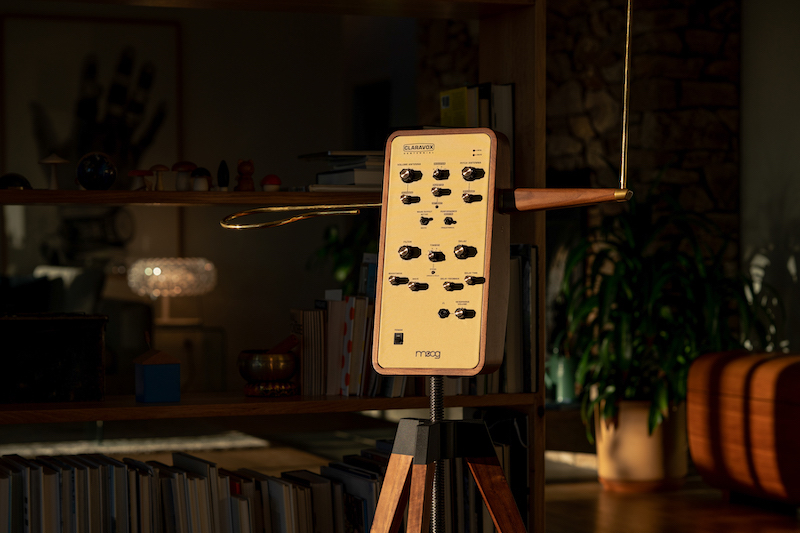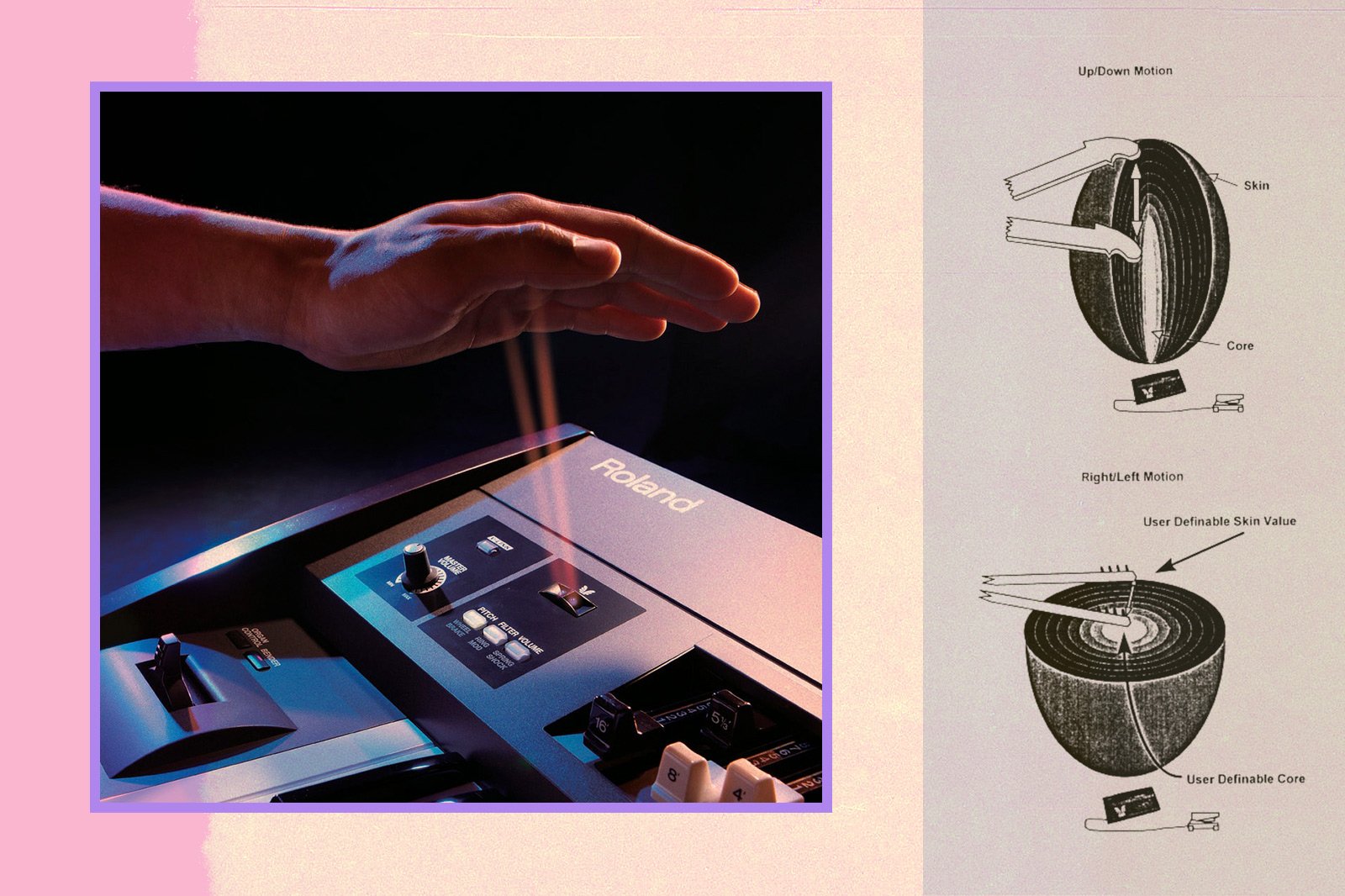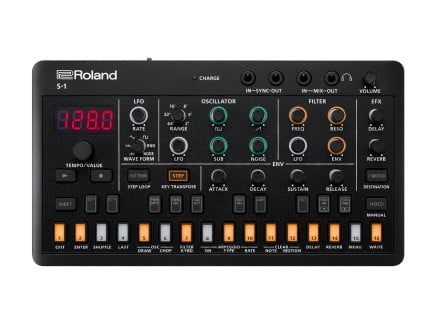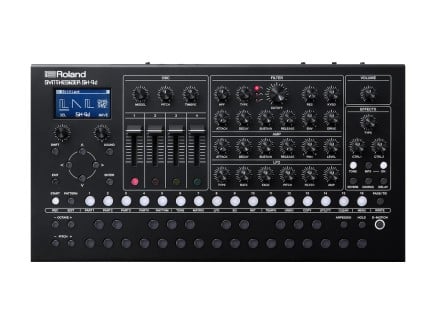I am a complete sucker for alternative input devices. Whether it’s the squishy keys of the Roli Seaboard, the alluring grid of LED pads found on the Linnstrument, or the enticing blank canvas of the Embodme Erae Touch MPE controller—I want to experience them all. I have a firm belief that by experimenting with the mechanisms by which you interact with your music gear, you can get results that you would never have come about otherwise.
Come to think of it, in many ways I guess that was part of the whole philosophy behind West Coast Synthesis in the first place…huh. Well, when it comes to these kinds of expressive electronic gadgets, one of the simplest, and perhaps most unfairly maligned innovations of the field is the humble D-Beam controller.
History and Origins of the D-Beam
Whether you’ve knowingly come across a D-Beam in the wild or not, you’ll almost certainly be familiar with its spiritual ancestor—the theremin. This wondrously oddball device was one of the earliest electronic instruments, invented way back c. 1919. It allowed the operator to control both the pitch and the volume of an audio signal by positioning their hands near two antennae.

This gave viewers a fantastic visual impression of the musician as some kind of magical, mad-scientist-like conductor. There are modern versions of the theremin available to this day, including various different offerings from Moog, and even a dedicated Eurorack module from Doepfer—the A-178.
The Dimension Beam as it was originally known, was a dedicated standalone device that was released by a company called Interactive Light in the late 1990s. It built upon the idea of a contactless instrument in the style of a theremin, using infra-red light to detect the position of the musician’s hands—or even the presence of a guitar headstock (which the manual helpfully suggests works best with the addition of reflective tape!).
Rather than producing audio on its own, it was specifically designed to act as a MIDI controller, sending out MIDI note or CC data. There were some interesting features in there to help make playing the thing a bit easier, including a scale mode, as well as the ability to hold or freeze a note via an optional footswitch input. As one may expect, the output was monophonic—though it is fun to imagine what a poly version of such a thing might end up looking like in practical terms.
The Roland Years
Not long after the commercial release of Interactive Light’s original controller, the rights to the technology were licensed by Roland, and it was soon implemented into their product range. One of the earliest and most notable examples of this was with the MC-505 from 1998—a fully featured groovebox which contained built in synthesizers, FX, a sequencer, and...real-time expressive modulation via the D-Beam.
Despite the minimal dedicated controls on the front panel, you could assign different parameters as the destination, including reverb amount, filter cutoff, mute states, and more. My own personal favorite is "adlib," which allows you to trigger notes from a particular, pre-set scale. This is a bit fiddly and unpredictable, though can be fun with a regular synth sound. For the real madness, you have got to try it with a rhythmical patch though, which often sounds as if somebody has fallen headfirst through an actual drum kit.
Despite finding fame with the MC-505, the D-Beam wasn’t confined to it alone, and instead has enjoyed a long history of inclusion in a variety of Roland’s devices. This included classics such as the SP-808 sampler groovebox, and the MC-909 workstation—both of which boasted not one, but two D-Beam controllers! The mind boggles just thinking about it.
If you like the sound of the D-Beam and the possibilities that it offers, then you are going to love D-Motion—something that Roland has recently implemented in synthesizers such as the SH-4d and the AIRA Compact S-1 Tweak Synth—which is a mini polyphonic reimagining of the SH-101. This took the general concept of physical movement to provide expressive control in an alternative way, and took it to new and dizzying heights (or rather, sides?). Rather than having a static infrared beam that you waved your hands around in front of to manipulate, D-Motion made use of a gyroscope, which meant that you could control not one, but two different parameters by physically tilting the entire synth from side-to-side, or back-to-front—along both the X and Y axes.
Combined with the flexibility of the built-in mod-matrix, you can actually get some pretty interesting effects from this approach—and despite the possible initial silliness of the idea, something similar can be found in a number of other popular devices, including the handheld Artiphon Orba, the ultra-stylish Monome Grid, and none other than Teenage Engineering’s OP-1. Perhaps Roland was onto something after all.
There are Opinions...
It would be fair to say that the perspective and feelings about the D-Beam and its usefulness within the electronic music community are...mixed, and will differ markedly depending on who you speak to. Some folks swear by it and the extra layer of expression it enables for performance, while others dismiss the Beam as nothing more than a pointless gimmick. Even a cursory search online will bring up a myriad of forum posts with people crying out in exasperation: “What is the point in this thing?!”.
As far as I’m concerned, I love the D-Beam. Yes, it may well be tricky to get accurate results with it, particularly if you are looking to play a particular melody—but that isn’t really where it shines anyway. The very magic of the D-Beam is that it provides a looser, more experimental means of varying elements of your compositions, injecting serendipity into pre-set arrangements, and encouraging spontaneous expression—something that is particularly welcome for live use.
I am all for the inclusion of functionality that helps encourage folks to think outside of the box (literally) when it comes to production and performance. If you want perfect playback—you can always use a sequencer. To me, the D-Beam stands as a lasting symbol of the playful, creative nature of electronic music. Long may it shine on.















